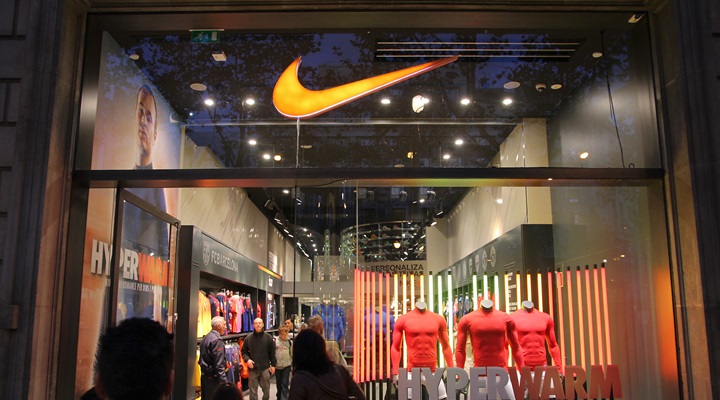In the last five years, a bevy of brands including Nike, Levi’s, Crocs and Under Armour have turned their attention to their consumers as they looked to cut out the middleman. And it’s little wonder given that in the US alone, direct-to-consumer (D2C) e-commerce sales are expected to grow 16.4 per cent to reach $197.11 billion this year. But pivoting an established brand to D2C is not without its challenges, as Nike can attest. To understand what went wrong, we need to backtrack a little
little.
In the decade before Covid, Nike’s share price rode the sneaker wave from $15 to a high of $100. Sneakers at the heart of pop culture saw precipitous gains for Nike. While the brand outperformed the market, competitors like Adidas also witnessed striking growth.
Across this period, Nike shared similarities with Apple. At their peak, both brands were masters of product innovation, catalyzing a cultural phenomenon. Innovation and corporate culture were driven by passionate insiders who loved the brand and just got it.
But just as Covid was about to dawn, Nike appointed an outsider, John Donahoe, as CEO. On March 20, 2020, Nike shares had dropped by a third from the previous month.
Initial market fears over the impact of the pandemic were wiped away as it quickly became clear Nike was well-placed to take advantage of the disposable income of those trapped at home. Both sneakers and athleisure boomed.
On the surface, it would appear Donahoe was nailing it. Confident fans would buy directly from the brand, the company slashed its roster of retail partners.
Nike leaned into the leisure market. Almost weekly, there were new drops. Retro-inspired leisure sneakers from the 40-year back catalog from Dunks to Air Force 1s and Air Jordan 1s landed. By November 5, 2021, Nike shares closed at $177.51. The brand was experiencing record sales.
But product innovation wasn’t keeping pace. From these heady heights, markets started taking a harsher judgment as results failed to keep up with the Covid boom. And, as the market turned, the cupboard was relatively empty. By June 27 of this, shares were trading at $94.19.
Judgement day was coming and on June 28, the share price slipped from $94.19 to close at $75.37. A veritable bloodbath.
John Donahoe the outsider was replaced with the returning ‘insider’ Elliott Hill and markets stabilised.
So just what happened and what are the retail lessons to learn?
Don’t underestimate the power of retailers
The first is underestimating the power of traditional retailers, in this instance, sports wholesalers.
Nike is an A-list brand with a devoted fanbase. As sales were flying, it looked for margin gain. Simply put, it tried to buck the retail model. Cutting out the middlemen (wholesalers) to get better margins by putting more emphasis on its D2C channels, both online and physical.
The brand shifted huge amounts of traditional icon-generating brand spend into performance channels to drive traffic to its own retail. This simultaneously ended half its wholesale relationships and restricted stock to others.
At first, the strategy worked and profits rose. However, there were three ticking time bombs.
The first was starving brand marketing to drive performance. The result was the erosion of brand love and that intangible factor of cultural cachet. A reminder for brands to keep feeding the top funnel for long-term success.
The second came when retailers cut off by Nike replaced the stock, merchandising space and co-marketing efforts with its competition. Traditional competitors like Adidas and interlopers like Hoka suddenly got a lot more unexpected exposure. The fundamental retail lesson here is more facings, more mental and physical availability filling the Nike void.
Remember your fan base
The third is that while Nike has a devoted fanbase, the vast majority of shoppers shop in traditional mass channels, and if Nike isn’t there, they’re going to go for the easy purchase.
Consumers are creatures of habit and most of the time will go for the familiar shopping experience over the brand cachet of the supplier. This is a reminder for brands to never underestimate the shopper and understand their habits to unlock sales.
The other strategic failure was to undervalue product innovation. Particularly for a culture-shaping icon like Nike.
Yes, retro designs and lines can drive sales bumps and Nike managed to cash in over the short term. But long-term it’s the product innovation that drives the business forward. Without an eye on the future, the present suffers.
I have no doubt Nike will bounce back and already some of the share losses are being recovered.
But Nike’s story highlights the delicate balance between cutting-edge innovation and respecting established retail channels. For any brand looking to shift toward D2C, neglecting either can prove costly in the long run.

